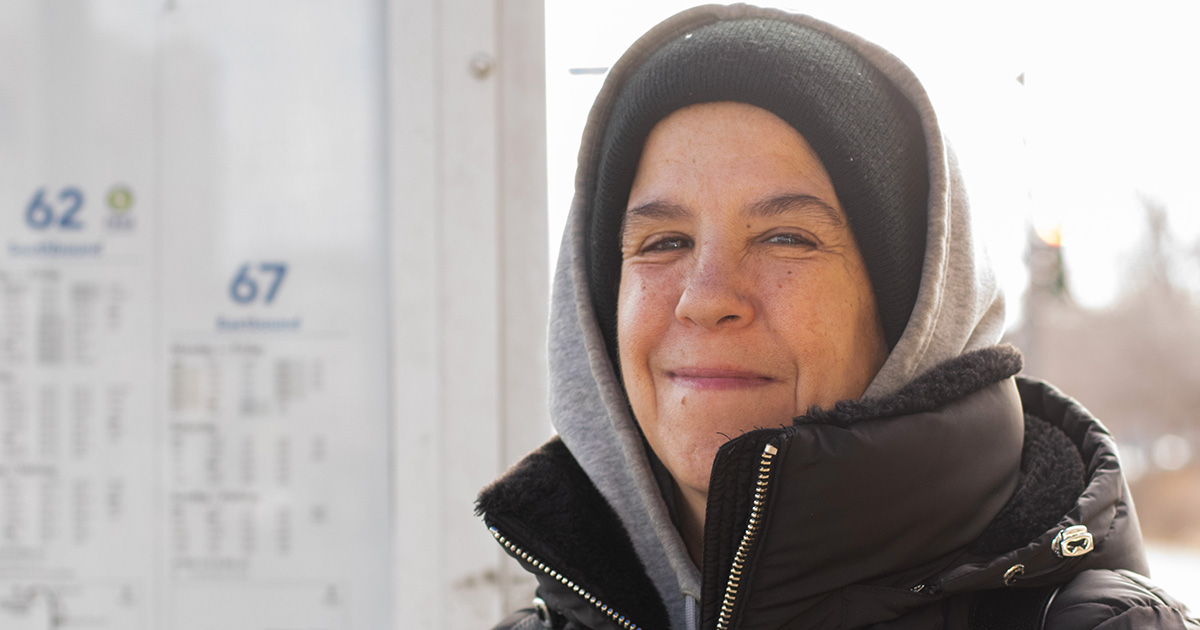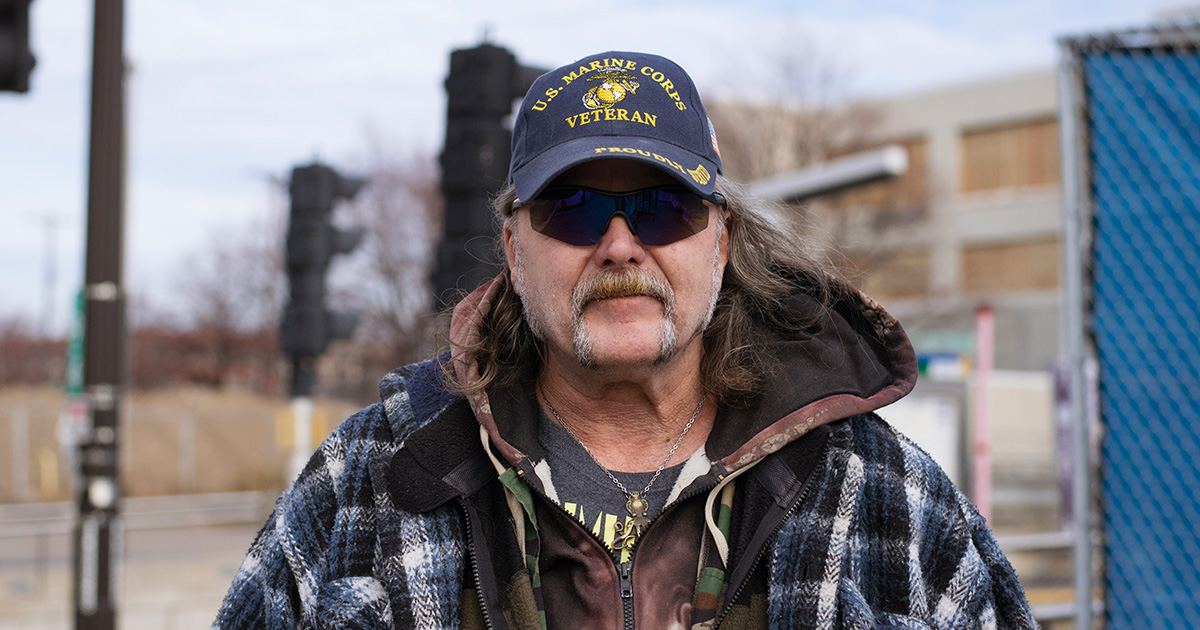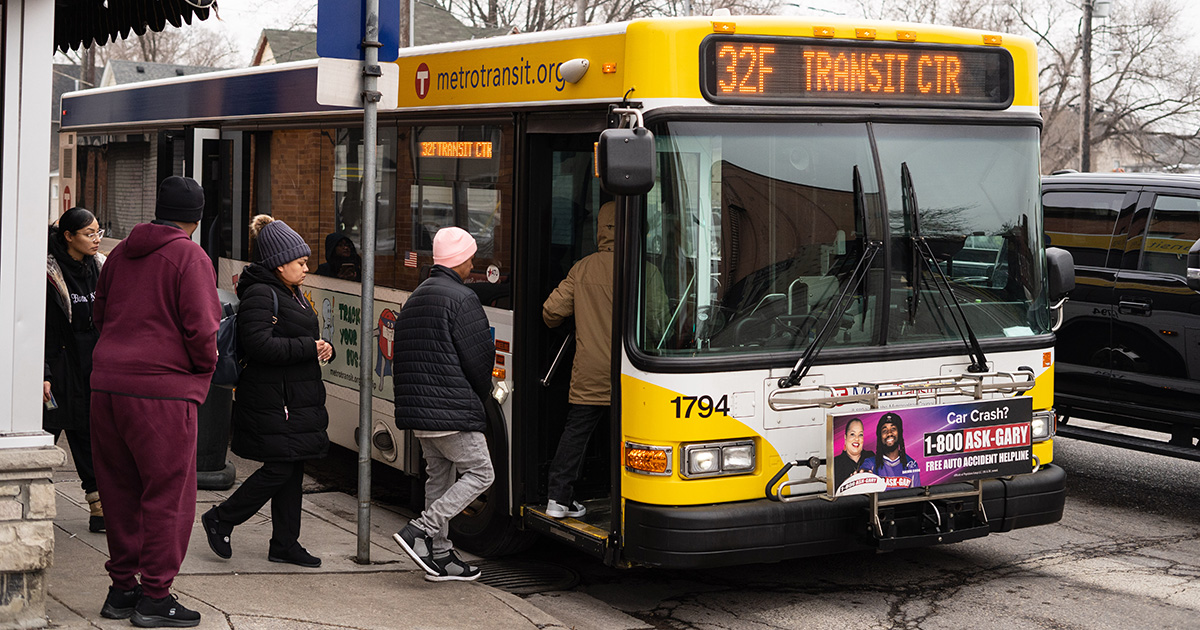Early Results Show Metro Transit Free Fare Pilot Benefits Riders and Boosts Ridership
Move Minnesota often gets out on Metro Transit buses and trains to connect with people and hear how the service is working for them. When we talked with April, she was at the bus stop waiting for the 62. It was a pretty typical day in January—bus riders got on and off as the bus made its way through Saint Paul. But unlike the previous winter, April, and everyone else on the 62, was riding the bus for free.
Metro Transit is currently piloting free fares on both the 62 and the 32. The 18-month free fare pilot program is required by the nation-leading transportation law Minnesota legislators passed with support from transit advocates in 2023. Alongside our other historic transit wins at the State Capitol, Move Minnesota Action successfully advocated for the free fare pilot as a way to improve access to public transit and to better understand the impact free fares can have for community members and for transit operations. A bus rider herself, Rep. Sydney Jordan authored the free fare legislation and was a key champion throughout the session.
In the two years before passing the bill, our organizing team talked with hundreds of people about their experiences on public transit and what matters to them as riders. Across those conversations, the cost of fares came up as a key concern for many people. Especially for regular riders, folks note, the cost adds up.
Today, people’s concerns about the rising cost of living remain high in Minnesota and across the US. At the same time, transportation is the second highest expense in most household budgets. And while public transit is significantly more affordable than owning a car, that daily expense can still discourage transit use, compete with other essential needs, or even keep people from getting where they need to go.
As April shared, back at the 62, “I think a lot of people can’t even afford transit. People are making decisions about the quality of the food they’re eating or if they’re going to [be able to pay a fare] throughout the day. We have to think about them too.”

New numbers from the first six months of the pilot show big increases in ridership on the fare-free routes, suggesting that free fares can successfully encourage and enable more people to ride the bus. As Axios recently reported: “On Route 32, which runs in the north metro between Robbinsdale and Rosedale Center, weekday ridership from July through December increased 38% compared to the same period the previous year when people had to pay to ride. That’s a much higher increase than overall Metro Transit bus ridership, which rose by 11% during that same time.” On Route 62 in Saint Paul, ridership from free-fare months was up 18%.
This data aligns with what we’ve heard from transit riders and other community members too. While we stood and watched the 62 pull up to the stop, Dino was among the riders getting off. He shared, “I think there’s definitely been an increase of people on since they made it free. It’s usually a pretty full bus.” Dino was positive about the pilot, adding, “I used to have to put money aside for this. . . . It’s better just being free.”

Dino’s comment, and the Metro Transit free fare pilots, are part of an ongoing, national conversation around transit fares and other ways to simultaneously increase ridership and improve service. Several communities across the country—including Boston, Tucson, Kansas City, and Alexandria, VA—are also offering free fares as they explore how to increase transit ridership, meet urgent climate goals, improve access and quality of life for residents, and make public transit systems–and the cities they serve—more affordable and more equitable. From Massachusetts to Minnesota, doing that well requires strong investment in our public transit systems, so people can expect a high-quality of service with or without fares.
Here in the Twin Cities, we’re happy to see Metro Transit’s first two free-fare pilot routes are already making a positive difference for riders and successfully boosting bus ridership. We will be watching closely as this pilot—and a regionwide pilot providing free regular-route service for Metro Mobility riders—continues through December 2024. In the meantime, there’s more we can do!
To improve daily lives, reduce the financial strain many families are feeling right now, and continue breaking down barriers to transit access for the good of our communities, Move Minnesota and Move Minnesota Action strongly support piloting free fares for people experiencing food insecurity or living in food deserts. The issue is part of our 2024 advocacy platform and work we’ll be moving forward this year in collaboration with Nourish MN—a new coalition led by Second Harvest Heartland. Nourish MN is championing legislation that will reduce poverty and expand affordable access to essentials including housing, food, childcare, healthcare, and public transit so all Minnesota families can thrive.
Reach out to Nas Nourkadi, Community Organizer, at nasn@movemn.org to tell us what this issue means to you and to get involved!

